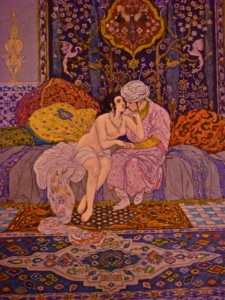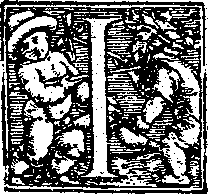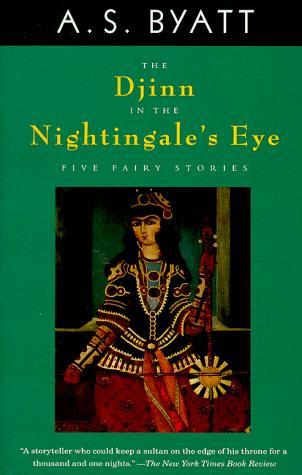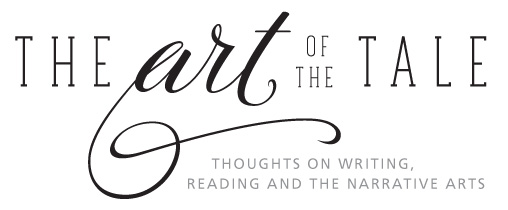
 recently reread one of my favorite tales, “The Djinn in the Nightingale’s Eye” by A.S. Byatt. As the title piece of Byatt’s first collection of ‘fairy stories,’ it involves a modern-day academic named Gillian Perholt, an English woman of a certain age, who comes across a real, live genie (or djinn) while attending a conference in Istanbul.
recently reread one of my favorite tales, “The Djinn in the Nightingale’s Eye” by A.S. Byatt. As the title piece of Byatt’s first collection of ‘fairy stories,’ it involves a modern-day academic named Gillian Perholt, an English woman of a certain age, who comes across a real, live genie (or djinn) while attending a conference in Istanbul.
This bare outline of a plot is hardly sufficient to describe the way Byatt takes raw material made famous by 1001 Nights (storytellers, dusty bottles, three wishes) and spins it into something original and profound. I consider A.S. Byatt one of the greatest modern writers working with literary tales, but it turns out she may be an acquired taste for some people. Or not to their taste at all.
I first became aware of this several years ago when I was teaching a course on fairy tales at the Newberry Library in Chicago, and was asked to meet with Jessa Crispin, editor-in-chief of the popular webzine, Bookslut. We were discussing modern writers of fairy tales and Byatt’s name came up. I mentioned how much I liked her work.
Crispin gave me a funny, sideways glance. “I—can’t—stand—her,” she said, almost under her breath. She did not elaborate, and I was so caught off-guard by her vehemence that I dropped the subject.
And then there was that media dustup awhile back, when Byatt publicly criticized the Harry Potter book series, saying that “Ms. Rowling’s world is a secondary secondary world, made up of intelligently patchworked derivative motifs from all sorts of children’s literature.” She noted that, while the books are entertaining, they have nothing to say about the nature of good and evil, or really about anything else.
Her assessment was pretty much accurate, but that didn’t stop many pundits and Harry Potter fans from declaring that the “Cambridge-educated author” had unjustly dropped “a goblet of bile” on Rowling’s books. Charles Taylor wrote in Salon that Byatt was probably jealous of Rowling’s success, and accused her of being a snob.
To be perfectly frank, I’ve had my own mixed feelings about Byatt, most notably over her stating repeatedly — in lectures, interviews, and essays — that she is not only not a Christian, but an “Anti-Christian.” As far as I know, no interviewer or critic has ever asked her what she means by that, and since it’s a statement clearly meant to provoke a response, it might be worth a little intellectual curiosity.
It’s harder to understand the visceral reaction some people have to her writing. I love Byatt’s work precisely because she isn’t afraid to think deeply about her subject matter. She assumes that her readers are also intelligent and curious, and in love with the pliable nature of language. She puts everything she knows into crafting beautiful, entertaining stories. What could be better, or less snobbish?
With the exception of her Booker Award-winning novel Possession, I prefer Byatt’s short tales, and “The Djinn in the Nightingale’s Eye” is about as good as it gets.
It was an interesting story to bring into the Newberry class. Most of my (all female) students loved it. Yet there were some exceptions, nearly all of them younger women. They agreed that the story had some funny moments, but it went off into too many meaningless digressions, telling stories within stories so often that it was hard to keep up with the main plot. Why couldn’t the author just stick to the point?
My older students had less of an issue with the story’s leisurely structure. They saw themselves in the character of Gillian, who, in her fifties when the story starts, has been left by her husband for a younger woman. Her children are grown and no longer need her.
Although Gillian is a successful academic (a “narratologist,” or scholar of stories), and can afford to live comfortably and travel, her life is in a stasis, which my older students also recognized. They identified with her dislike of her lumpy body, her carefully concealed insecurities, and her nagging fear of death. Like her, they maintained still-potent and youthful imaginations, which they longed to release. But they knew the difficulty in reconciling their inner and outer realities. (Few popular narratives today offer appealing roles for older women.)

Is Gillian a stand-in for Byatt herself? Probably, at least to the extent that the author believes that it’s through the act of telling stories, and encountering stories, that we find out who we really are. Or how we can be transformed.
Byatt carefully sets the reader up for the appearance of the djinn. She is a wonderful writer of sensual details, and can also be very funny, and these skills play off each other while describing the scene:
Gillian came out and saw the djinn, who now took up half her large room, curled round on himself like a snake, with his huge head and shoulders pushing against the ceiling . . . (h)e seemed to be wearing a green silk tunic, not too clean, and not long enough, for she could see the complex heap of his private parts in the very center of her rosy bed. Behind him a great expanse of shimmering many-coloured feathers, peacock feathers, parrot feathers, feathers from birds of Paradise, which appeared to be part of a cloak that appeared to be part of him, but was not wings that sprouted in any conventional way from shoulder-blade or spine. Gillian identified the last ingredient of his smell, as he moved his cramped members to look down on her. It was a male smell, a strong horripilant male smell.
Once Gillian has gotten used to him, she and the djinn get to know each other by sharing their personal stories. In doing so, Gillian finds it difficult to talk about herself. Even the djinn is puzzled. He tells Gillian: “Your stories are strange, glancing things. They peter out, they have no shape.”
In Middle Eastern tradition, djinns are creatures of fire, on the same order as angels and demons. They have the ability to create change. Meeting the djinn transforms Gillian, and her first two wishes are fulfilled on a physical level. In the first, she asks to have her body as it was when she most liked it — in this case, in her 30s. In the second, she asks the djinn to love her. The two of them make love, and I have seldom come across a better scene in fiction, which works seamlessly with the magical setting rather than stopping the story cold:
All love-making is shape-shifting – the male expands like a tree, like a pillar, the female has intimations of infinity in the spaces which narrow inside her. But the djinn could prolong everything, both in space and in time, so that Gillian seemed to swim across his body forever like a dolphin in an endless green sea, so that she became arching tunnels under mountains through which he pierced and rushed, or caverns in which he lay curled like dragons. He could become a concentrated point of delight at the pleasure-points of her arched and delighted body; he could travel her like some wonderful butterfly, brushing her here and there with a hot, dry, almost burning kiss, and then become again a folded landscape in which she rested and was lost, lost herself for him to find her again, holding her in the palm of his great hand, contracting himself with a sigh and holding her breast to breast, belly to belly, male to female.
Yet the end of the story brings no expected happily-ever-after with the djinn, and Gillian recognizes that she will continue to age and die. The difference is that she’s no longer afraid of the process. Without giving too much of this story away (and its pleasures are really found in the reading), I want to venture some thoughts on what I think Byatt is trying to say to her readers.
Most people recognize a point in their lives when it’s difficult to think ahead to a future. It’s like being on a boat and we no longer look out to see what’s ahead, but instead turn back to see what’s left in the boat’s wake.
People at midlife often end up on the analyst’s couch, going over their pasts, looking for a deeper understanding of events and relationships. Yet there are other ways to do this. Over the years, Byatt has demonstrated a marked pulling away from psychoanalysis, which she views as inadequate for understanding who we really are. She believes that stories — the narratives outside us — can provide us with better guideposts.
Gillian realizes that “there are things in the earth, things made with hands and beings not made with hands that live a life different from ours . . . and cross our lives in stories, in dreams, at certain times when we are floating redundant.” For her this has been the djinn, who has served as a kind of muse, allowing her back into the imaginative realm most easily accessed by children. When we are young, we often think of our lives as part of a narrative. We look to other stories to give us ideas on how to respond to the world.
As we age, this natural facility ebbs somewhat — and as I mentioned before, when women reach a certain point, they struggle to find themselves in the role of ingenue, or passionate lover, or wife and mother, as they once did. What’s left to the older woman? The crone? Most women don’t get very excited by that prospect.
Byatt’s tale ends with Gillian content, knowing that her story continues in its own unique way — not trapped in any conventional narrative, but open to the magical.
The great challenge for storytellers in the future will be to search out the narratives for older women (and men). They are out there — but in many respects they are the great uncharted territory. Here’s to hoping that more writers will take the chance.
